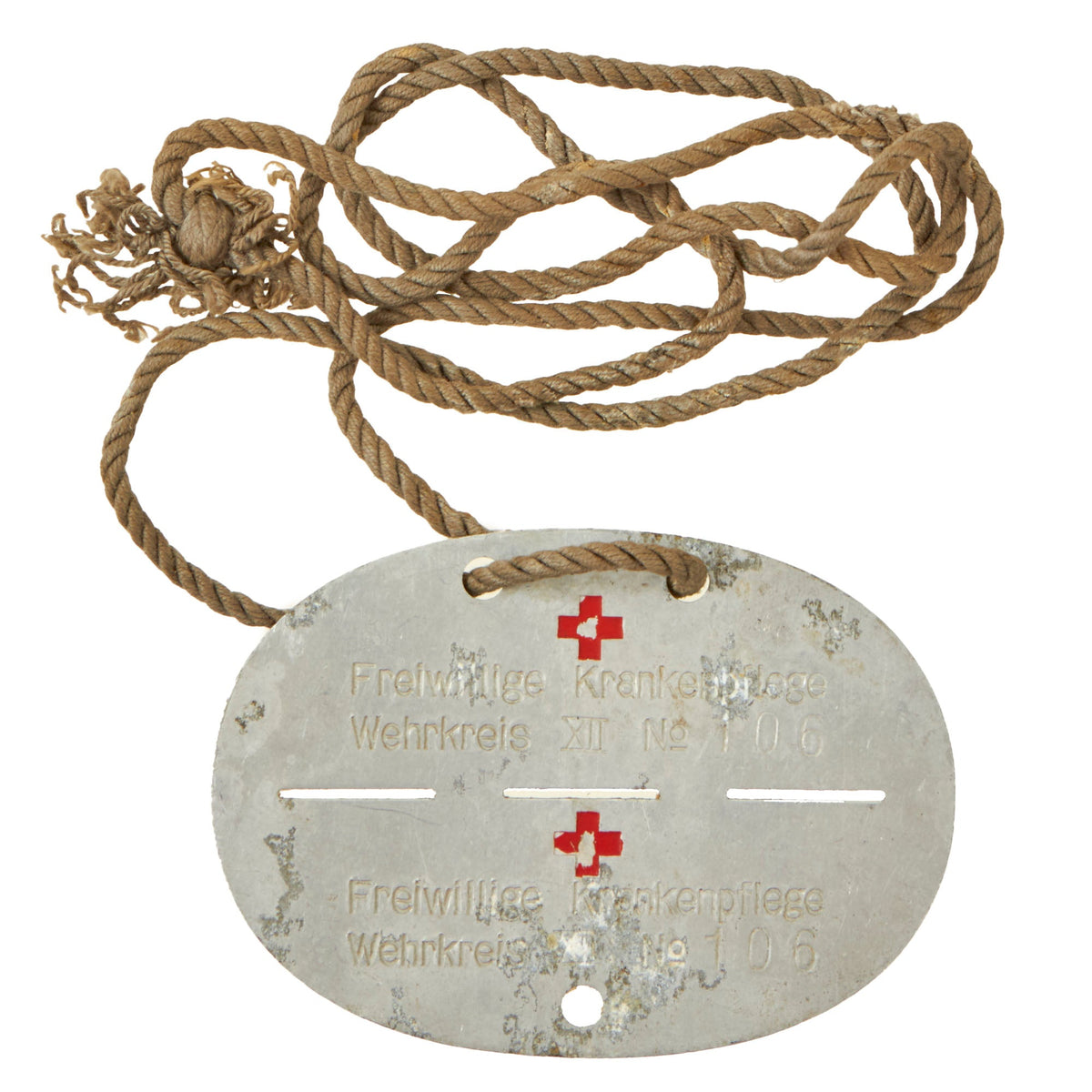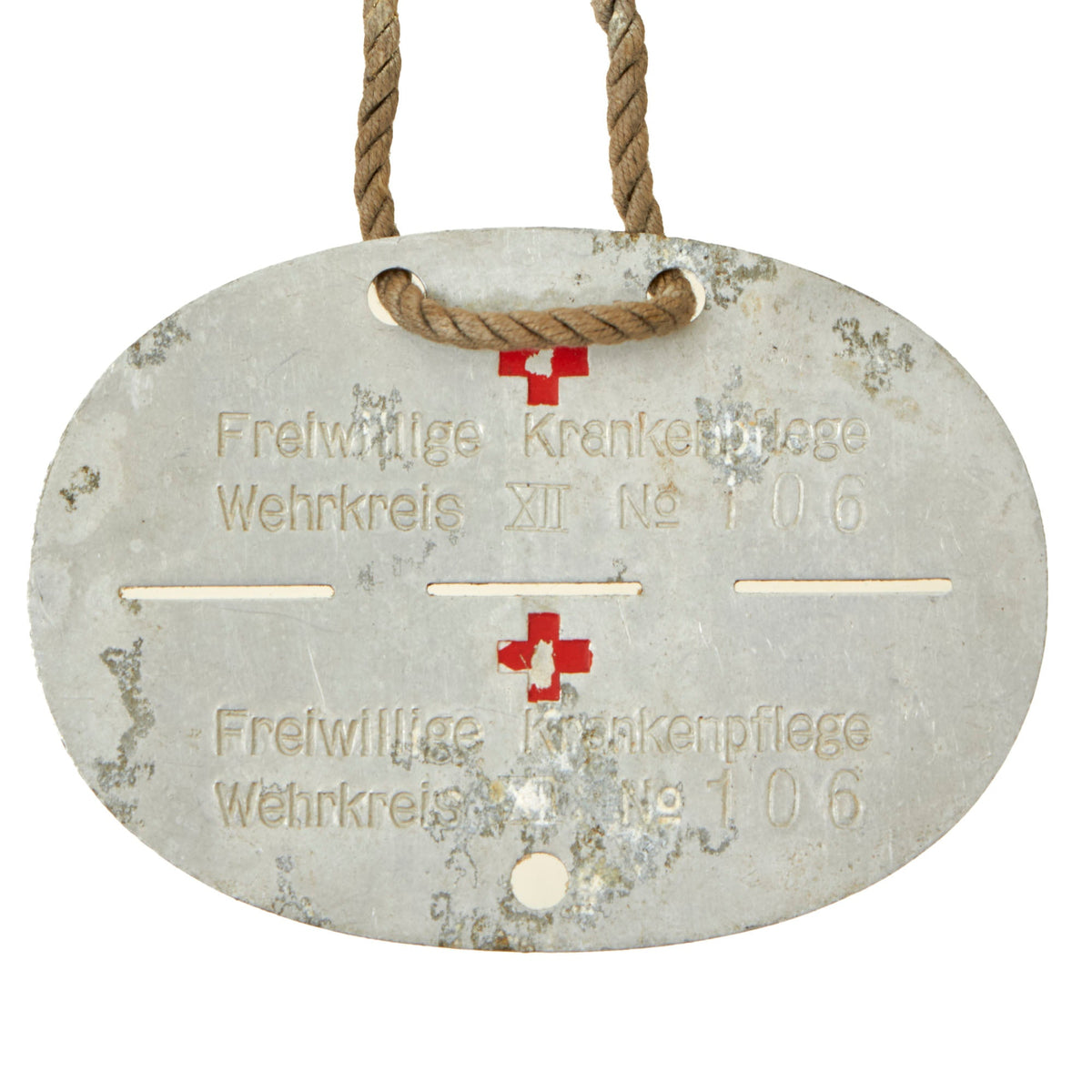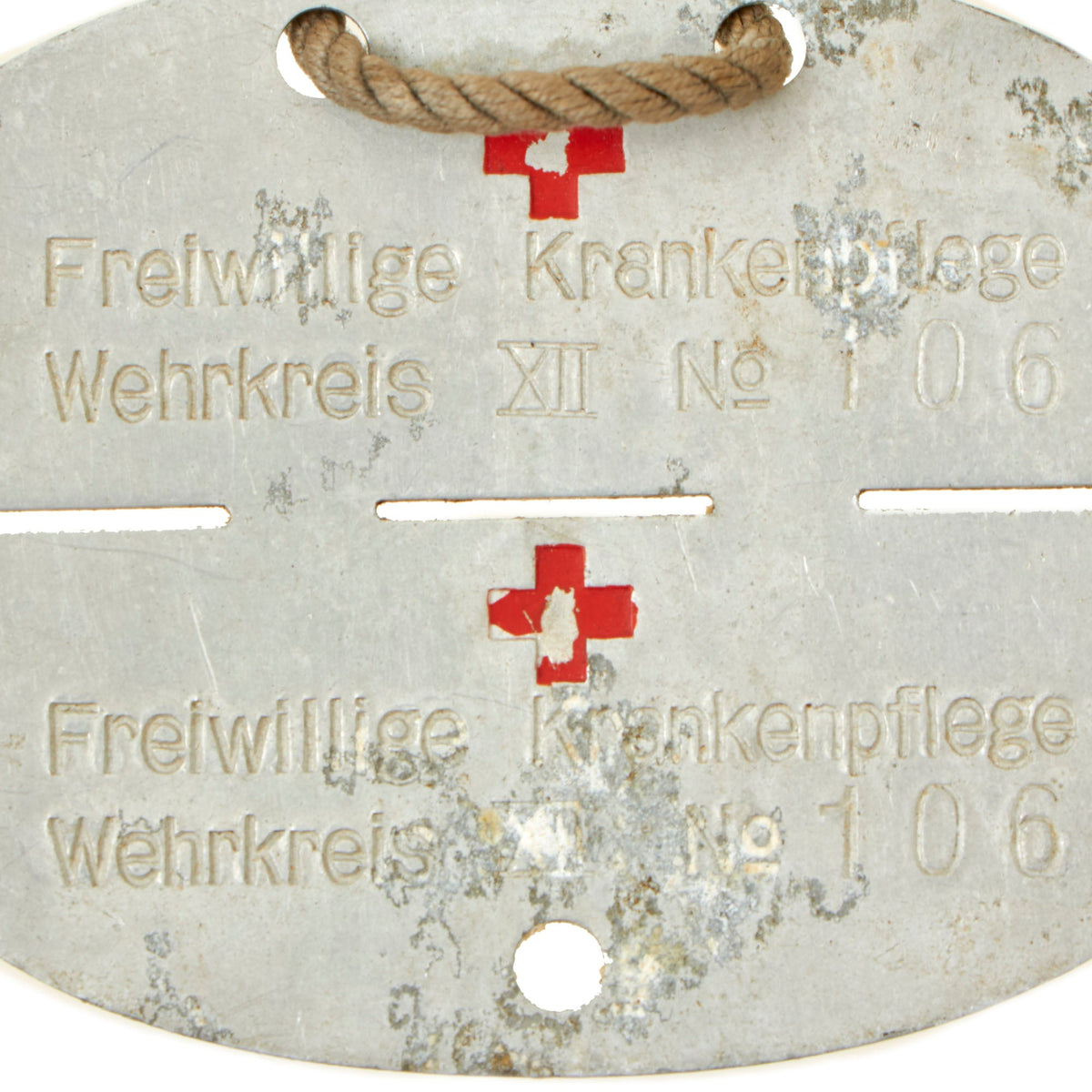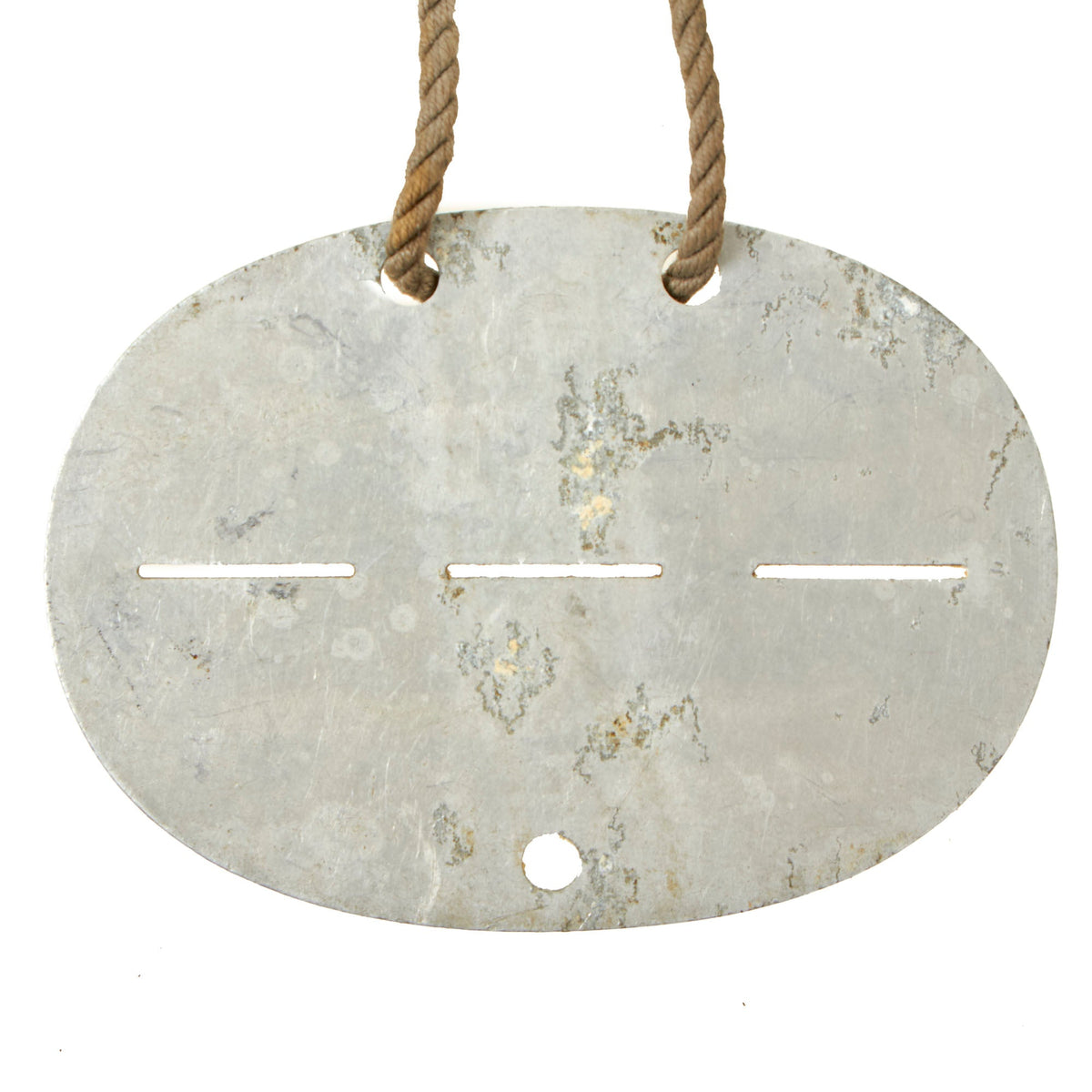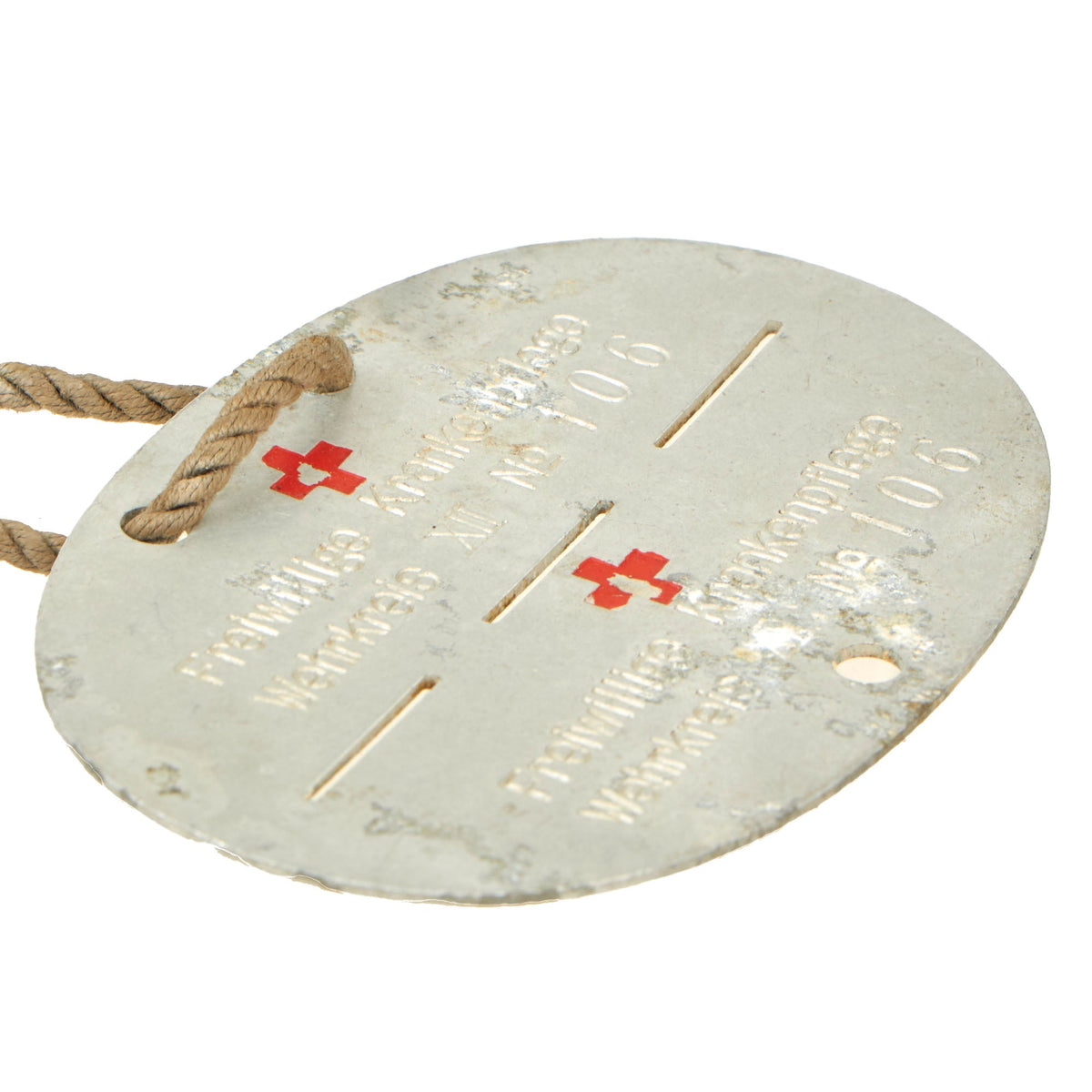Original German WWII DRK Red Cross Identity Disc Dog Tag from Military District Wehrkreis XII Original Items
$ 195,00 $ 78,00
Original Item: One-of-a-kind. This is a genuine German WWII DRK Red Cross Nurse identity disc (aka; Dog Tag) Erkennungsmarke, used to identify members in the field. These were made of plated steel, aluminum, or zinc, and were designed so that if the wearer died, the bottom half of the tag would be broken off, while the other half remained with their body.
This example is made of stamped aluminum and is in very good condition, showing some scattered oxidation and still retaining an original neck string. It is marked as follows on both sides:
(Red Cross)
Freiwillige Krankelpflege
Wehrkreis XII No 106
The Dog Tag bears a “Red Cross” symbol, and indicates it is for Freiwillige Krankenpflege (Volunter Nursing), and that they were No. 106 stationed in Wehrkreis XII (Military District XII). These were not named to the nurse themselves but to the unit in which they were serving, and they were assigned a number, as with all German dog tags. The tag measures 2 ¾” x 2”, and does show some wear to the “red cross” symbol.
This is a really gorgeous dog tag ready for further research and display.
Wehrkreis XII
This military district was headquartered at Wiesbaden. Its territory was roughly equivalent to the modern-day German states of Rhineland-Palatinate and Saarland, with the addition of a small part of northern Baden (around Heidelberg). Wehrkreis XII was the home district of the XII Army Corps, which was formed on 1 October 1936 with headquarters at Wiesbaden.. After the German victory over France (1940), Wehrkreis XII was expanded through the addition of parts of Lorraine (such as the Nancy area).
History of the German Red Cross (DRK)
The DRK, “Deutsches Rotes Kreuz” (German Red Cross), a voluntary civil assistance organization originally instituted in 1864, was officially acknowledged by the Geneva Convention in 1929. In December 1937 it gained status as a legally recognized organization by the NSDAP. As with other essential services in Third Reich Germany, it came under control of the NSDAP in late 1938 under the auspices of the Ministry of the Interior’s Social Welfare Organization.
History of the “Red Cross” Symbol
It was important to clearly identify Medical personnel in the field. One of the early documents, such as the Amelioration of the Conditions of the Wounded in Armies in the Field signed August 22, 1864, by a number of Governments, already instructed that Flag and Arm Badges worn by Medical personnel would bear a Red Cross on a White Field. Both symbols when used on Hospitals, Ambulances, Evacuation and Aid Centers, were to be proof of their neutral status! These signs provided for neutrality of military and civilian protected personnel (it gave them non-belligerent status) exclusively engaged in removal, transportation, and treatment of wounded and sick, or the administration of sanitary formations and establishments, and entitled them to respect and protection from their enemies. The 1929 Geneva Convention which superseded the former agreement, was signed on July 27, 1929 by forty-seven countries (including the Axis countries, Germany, Italy, and Japan) and comprised numerous articles, among which Articles 9 and 21, recognizing that bearers of special identification cards and civilian protected personnel identified by armbands, and vehicles, and installations wearing Geneva Convention markings and markers, were all exclusively engaged in medical care activities, and consequently protected and respected by the Geneva Convention.
Fast Shipping with Professional Packaging
Thanks to our longstanding association with UPS FedEx DHL, and other major international carriers, we are able to provide a range of shipping options. Our warehouse staff is expertly trained and will wrap your products according to our exact and precise specifications. Prior to shipping, your goods will be thoroughly examined and securely secured. We ship to thousands clients each day across multiple countries. This shows how we're dedicated to be the largest retailer on the internet. Warehouses and distribution centres can be located throughout Europe as well as the USA.
Note: Orders with more than one item will be assigned a processing date depending on the item.
Before shipping before shipping, we'll conduct a thorough inspection of the items you have ordered. Today, the majority of orders will be delivered within 48 hours. The delivery time will be between 3-7 days.
Returns
The stock is dynamic and we cannot completely manage it because multiple stakeholders are involved, including our factory and warehouse. So the actual stock may alter at any time. It's possible that you may not receive your order once the order has been made.
Our policy is valid for a period of 30 days. If you don't receive the product within 30 days, we are not able to issue a refund or an exchange.
You can only return an item if it is unused and in the same state as the day you received it. You must have the item in its original packaging.
Related products
Uncategorized
Uncategorized
Uncategorized
Uncategorized
Uncategorized
Uncategorized
Uncategorized
Uncategorized
Uncategorized
Uncategorized
Armored Burgonet Helmet & Polearm from Scottish Castle Leith Hall Circa 1700 Original Items
Uncategorized
Uncategorized
Uncategorized
Uncategorized
Uncategorized
